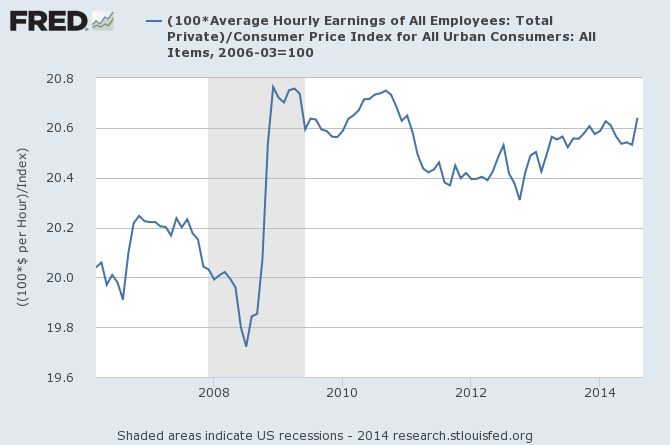After taking a couple months off in the 'promising figures' category, the unemployment rate seems to have broken back in the direction we all want to see it going: down. 5.9% is the headline figure, and that 5.9% number came with a very promising increase in the nonfarm payroll employment number... 248,000.
But... What About the Raises?
That's great; those are some solid numbers - and, arguably, anything over 150,000 new jobs is a win (that's the estimated breakeven employment number to incorporate new workers - but that'll change as the bulk of the Boomers hit retirement age). However, the one we've told you we're watching is actually inflation. You see, as we get to full employment, that has historically come with some degree of wage pressures - competition for workers by employers replaces competitions for jobs by unemployed citizens, which means, well, inflationary pressure. In other news, the seasonally adjusted CPI-U decreased over the last month, is only up 1.06% on the year (over the last 12 months, +1.71%).
Well, obviously, it's complicated. You know, a lotta ins, lotta outs, lotta what-have-you's. And, uh, a lot of strands to keep in my head, man.
But a truly durable recovery will eventually come with some durable wage pressures. Here's what we've got for average private hourly earnings over those same timespans (seasonally adjusted but not inflation):
- Year to Date: +1.27% (One additional month, as CPI hasn't updated)
- YoY: +1.93%
So, you did get a raise - probably... since CPI-U is a month behind, but wages are running just a little bit faster than inflation. Here's how everything looks from 2006 on, adjusted for inflation (March 2006 based dollars):
(If there's enough interest, I'll consider doing an income by 'age' post (for all workers) to ensure our statistics aren't too colored by high earners retiring).
So, there you have it - a recovery, but not much of a raise... yet. Any theories? Any other threads we can pull to explore this in greater detail?

